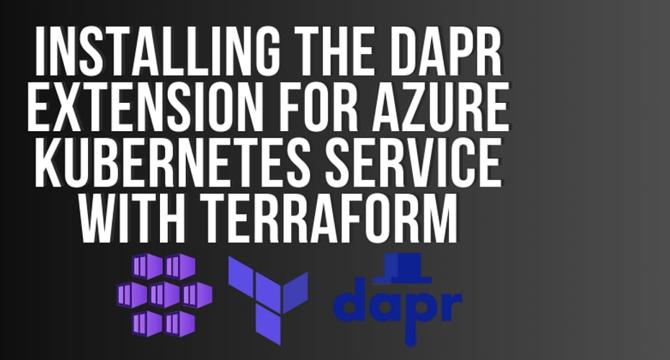Dev
1M
339

Image Credit: Dev
Installing the Dapr extension for Azure Kubernetes Service with Terraform
- To install the Dapr extension on an Azure Kubernetes Service (AKS) cluster, Azure recommends using the AKS community extension repository, where it is available under microsoft.aks.managedClusters/extensions.
- The first step to installing extensions on your AKS cluster with Terraform is to give your cluster a managed identity.
- Extensions have different configuration settings, which you can configure in the configuration_settings block of your azurerm_kubernetes_cluster_extension resource.
- Installing AKS extensions with Terraform is fairly straightforward, this gives us the advantage of installing our extensions in a declarative way instead of configuring them imperatively.
- The Dapr extension provisions the Dapr control plan on your AKS cluster and creates a few Kubernetes services, which include dapr-operator, dapr-sidecar-injector, dapr-placement, and dapr-sentry.
- AKS cluster extensions are available in AzureRm provider and configuration_settings are an optional configuration settings property.
- You can create a dapr-extension module, or use one of modules available in the AKS extension directory.
- To get started with Dapr, developers essentially need to create deployments that specify Dapr's services and use Dapr's building block APIs by adding annotations to their deployments.
- Installing the Dapr extension on an AKS cluster is a straightforward process and can be declaratively installed with Terraform.
- By using a managed identity, Terraform can configure the Dapr cluster extension on your AKS cluster with ease.
Read Full Article
20 Likes
For uninterrupted reading, download the app